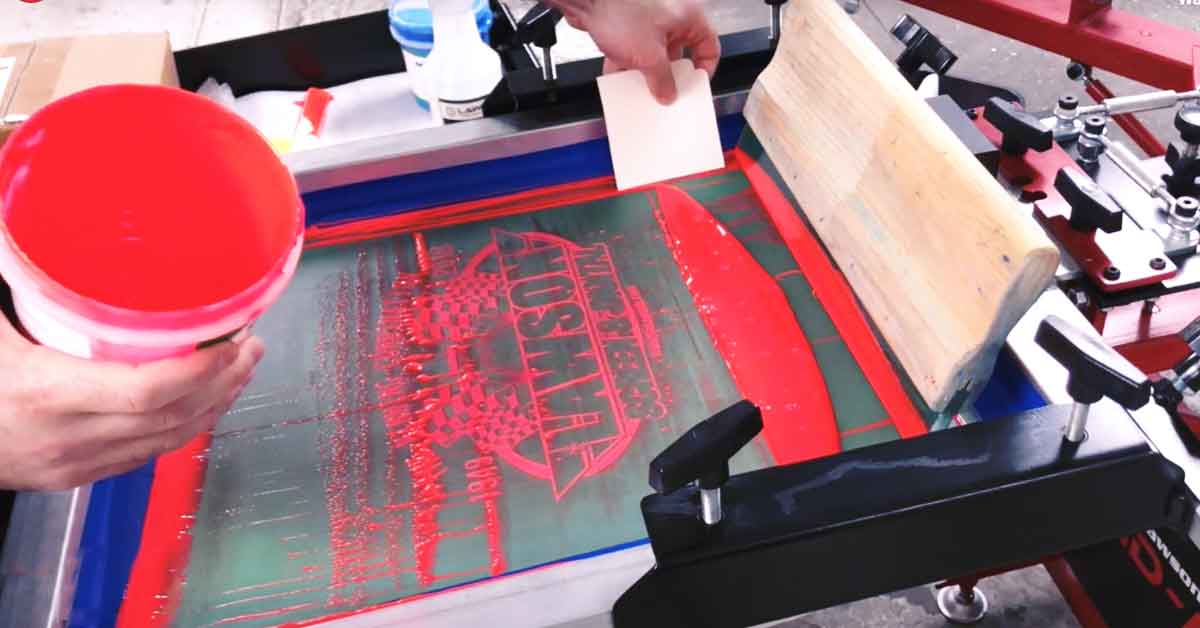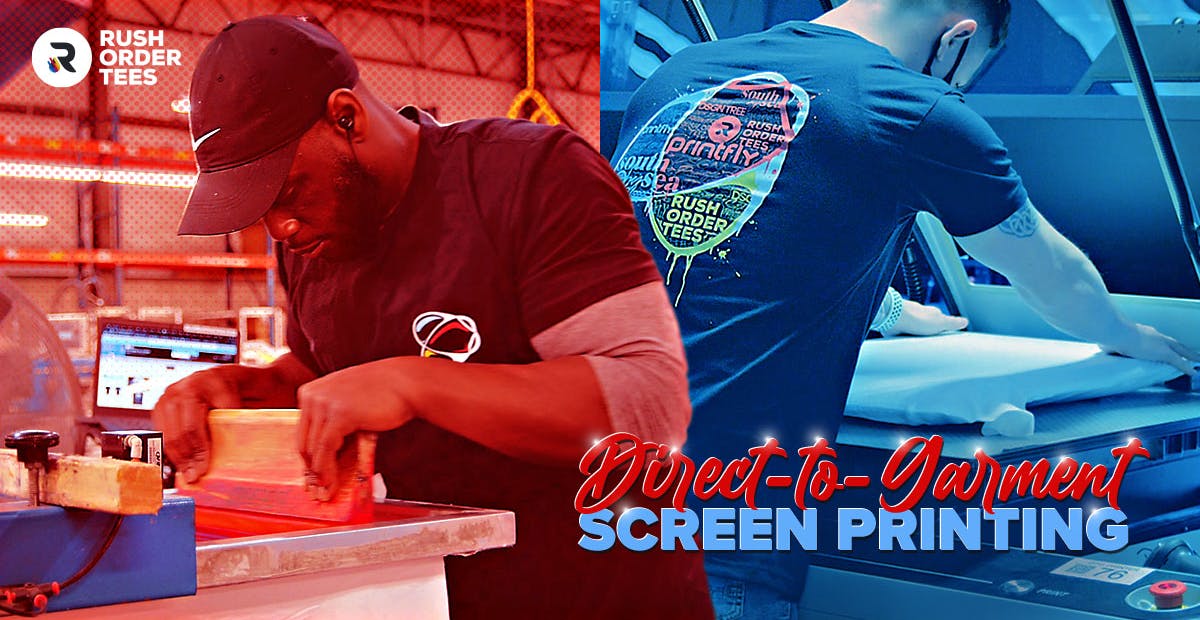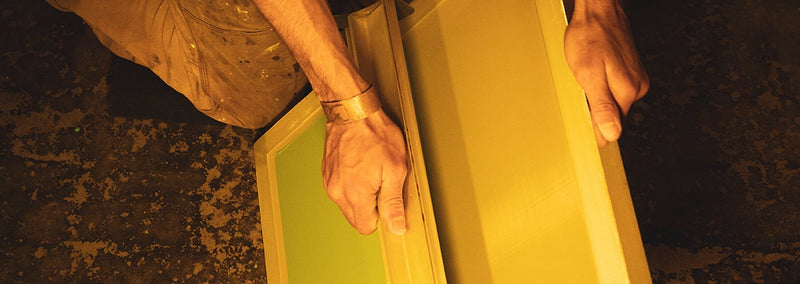The smart Trick of Tx Tees That Nobody is Talking About
The smart Trick of Tx Tees That Nobody is Talking About
Blog Article
The 5-Second Trick For Tx Tees
Table of Contents5 Simple Techniques For Tx TeesThe 6-Minute Rule for Tx TeesTx Tees Can Be Fun For EveryoneWhat Does Tx Tees Do?Not known Incorrect Statements About Tx Tees The Best Guide To Tx TeesWhat Does Tx Tees Mean?
Include up other prices, like the number of energies it takes to run the shop and the expense of ink and emulsion per layout. Take the print below.The emulsion ought to only be a few cents considering that you 'd just require to coat one screen for this job. Typically, printers attempt to make up to 45% profit on a print job.

With DTF, you can print a handful of t shirts, or just one. Make use of the very same calculator as the section above to compute exactly how much revenue you 'd make utilizing DTF transfers. Compare the costs and earnings to whichever technique speaks ideal to your configuration and process. Both display printing and DTF have their specific niches on the planet.
The 9-Second Trick For Tx Tees
The ideal way to understand? Ask about and see what printing shop like yours are doing. custom monograming. Try both out and see which you like much better
When you're selecting what sort of printing method to make use of for printing your artwork styles on your garments, it is necessary that you recognize the differences between these two methods so you can maximize results while reducing expenses. Screen printing is one of the most generally used technique for printing designs on textiles.
DTG printing is also called spot or direct to garment printing since it prints only what is needed rather than making a screen as screen printers do. https://myanimelist.net/profile/txtees02. Display printing functions by screen filler squeegee display printing ink screen mesh display, then moving the image to garment utilizing warm and/or stress
The DTG printer utilizes unique dye-sublimation inks that are applied right into a pre-designed image by an electronic printing system. The inks end up being part of the material, enabling vivid colors and extraordinary information. It's likewise recognized as spot or straight to garment printing because it prints just what is required instead of making a display as display printers do.
Tx Tees Things To Know Before You Buy
It's much faster - you can print a fullcolor picture in minutes, as opposed to hours for display printing. Second, there's no established up time or costs involved - you can print any kind of design you such as, without having to develop a screen first. Third, there's no waste - since screen printers display print one layout at once, they need to evaluate each shade individually.
The paper is extremely pricey and can just be utilized when. Once it's printed on, it needs to be disposed of. - The preliminary acquisition cost is reduced than the in advance investment of DTG printers- You can publish multi-color designs one display at once rather than needing to print each color separately like DTG printing.

The Single Strategy To Use For Tx Tees
Rather of using display mesh as screen printers do, color sublimation printers use laser innovation to transfer your photos onto garments or paper. A warm process transfers the dye from its solid-state directly into the gas stage which subsequently fuses it onto material substratums when they are rapidly heated up to high temperature levels under high pressure.
Sublimation printing is eco-friendly. It utilizes much less water than screenprinting, and because it doesn't include using damaging solvents, it's secure for all kinds of apparel. The color sublimation inks are additionally odor free when treated, unlike display printers that make use of harmful chemicals during the screen printing process that leave behind an unpleasant smell.
They additionally conserve cash on pricey equipment like exposure units because color sublimation printers do not require a UV direct exposure device or a flash cure oven that is commonly used in screen printing (t-shirt printing). What is direct to garment printing (DTG Printing)? DTG printing is a digital screenprinting process that publishes straight onto material utilizing specialized inkjet printers
Tx Tees - An Overview
DTG printing uses numerous advantages over standard screenprinting, including the ability to publish photographic high quality images, higher color vibrancy, and the capacity to publish designs on darker textiles. DTG printers work by warming the fabric ink until it becomes a gas. The gas after that permeates the fabric, bonding with the fibers to produce a permanent print.

Display printers merely prepare their display after that begin printing up until they run out of item or ink.- There is a vast array of seasoned display printers around the world, which can be valuable for novices. - It's a slower process - screen printers often have to wait for the ink to completely dry prior to they can print the following color- Screen printers call for hand-operated labor, so there's a greater discovering curve and it takes longer to produce a top quality design- Display printing isn't as precise as DTG printing, so you may obtain some "blood loss" of colors from one part of the photo onto one more if not done properly.
Tx Tees - The Facts
However, rather than using display mesh as screen printers do, dye sublimation printers make use of laser innovation to move your pictures onto garments or paper. A warm procedure transfers the color from its solid-state straight into the gas stage which in turn integrates it onto fabric substrates when they are swiftly heated up to heats under high pressure.
Sublimation printing is environmentally friendly. It makes use of less water than screenprinting, and due to the fact that it doesn't entail the use of dangerous solvents, it's safe for all kinds of garments. The color sublimation inks are also odor-free when healed, unlike screen printers that use dangerous chemicals throughout the screen printing process that leave behind an undesirable smell.
They also save money on expensive devices like direct exposure devices because dye sublimation printers don't call for a UV direct exposure device or a flash cure oven that is usually made use of in display printing. What is straight to garment printing (DTG Printing)? DTG printing is an electronic screenprinting procedure that prints directly onto fabric using specialized inkjet printers.
8 Simple Techniques For Tx Tees
DTG printing supplies lots of advantages over standard screenprinting, including the ability to print photo top quality photos, higher color vibrancy, and the ability to publish layouts on darker materials. DTG printers work by heating the fabric ink up until it turns into a gas. The Continued gas after that permeates the fabric, bonding with the fibers to develop a long-term print.
Report this page